Cabin 8-Meet the Bats
1. Evening Bat:

Image 3
-
-
- These bats are dark brown, sometimes with a bronze or red tint. They have short ears, and a broad, black muzzle that doesn’t have fur. They are similar to Big Brown bats, but smaller.
- Evening bats have a wingspan of about 10-11 inches, (a little shorter than a standard ruler), and live in colonies of a couple bats to up to 70 bats. Typically, they like to roost behind loose bark, in the crevices/cavities of dead trees, and in Spanish moss. They will also roost in man-made structures, such as bat houses, the underside of bridges, and the brackets on utility poles. They eat a variety of flying insects, and live all over Florida except in the Keys.
-
2. Big Brown Bat
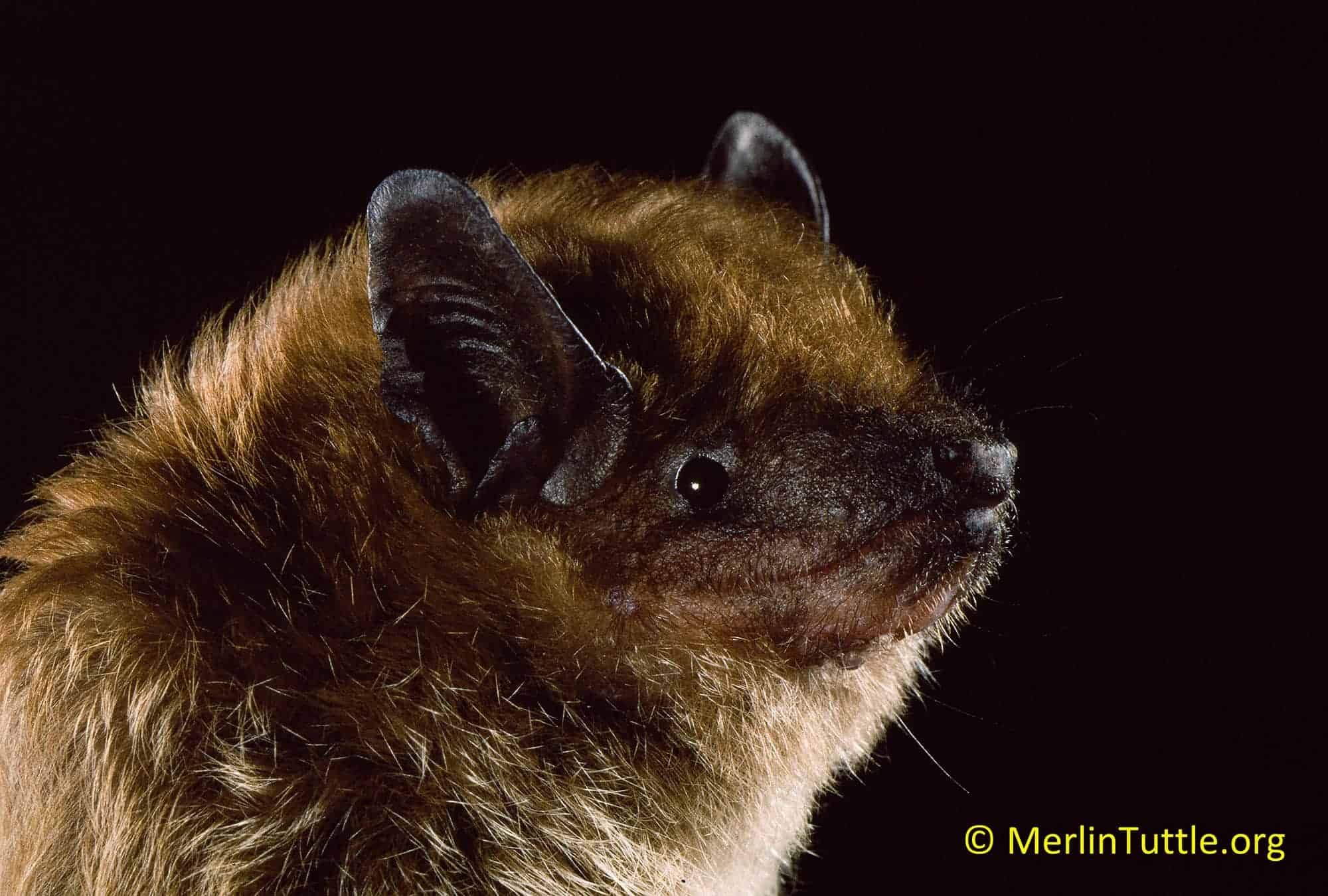
Image 4
-
-
- With long, brown, red, or gold fur, these bats have ears and wings that are almost black. They are really similar to the Evening Bat, but bigger, with a wingspan of about 13 -14 inches (a bit longer than a standard ruler). Nursery colonies (groups of female bats that gather to raise their young) can be anywhere from 20 to 300 bats, whereas males are solitary during this time period.
- They eat a variety of bugs, and typically roost in dead tree cavities, however, they have been found to roost on the base of palm frond stems. They are found nationwide, and in Florida are found state-wide, with the exception of the Keys.
-
3. Brazilian Free-tailed bat
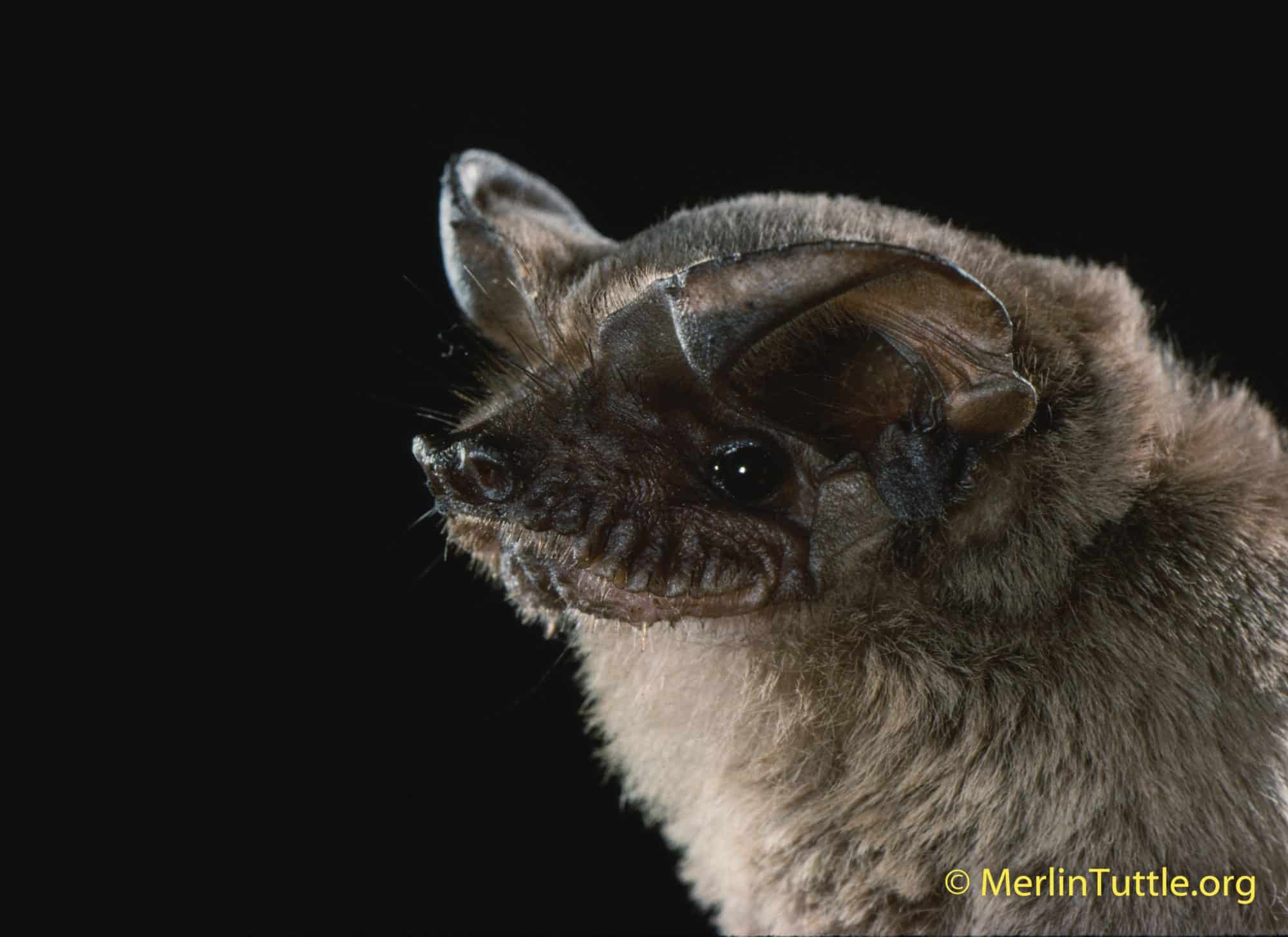
Image 5
-
-
- Brazilian Free-tailed bats are brown-gray in color, with a tail that extends beyond their wind membrane, which is how they got their name. These bats also have a scent gland that exudes a musky odor often mistaken for bat guano.
- These bats are colonial, and roost almost always in manmade structures, from bat houses to barrel tile roofs. This makes them the most likely to take over bat boxes.
-
4. Florida Bonneted Bat

Image 6
-
-
- This bat holds the title of the largest bat in Florida, and earned its name from their large, slanted ears that lean forward over their eyes. Bonneted bats are brown-gray in color, and they feed on flying insects and other bugs.
- These bats are colonial, roosting in tree and cliff crevices, as well as buildings. They have also been known to roost in bat boxes. These bats live exclusively in South Florida, with the exception of the Keys, and are classified as endangered.
-
------------------------------------------------------------------------------------------------------------------------------------------------------------------
Which one is your favorite?
A. 1
B. 2
C. 3
D. 4
------------------------------------------------------------------------------------------------------------------------------------------------------------------
Other bats
-
-
- Here is a list of the other bats you can find throughout Florida, including here at Tanah Keeta!
-
Tri-colored bats (Eastern pipistrelle)
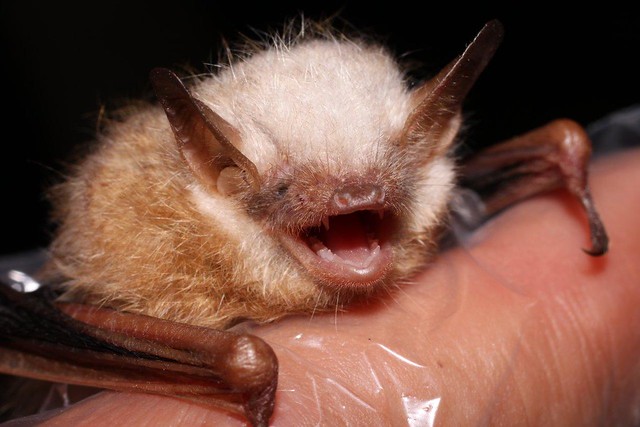
Image 7
-
-
- Florida’s smallest bat, with a wingspan of 8-10 inches. Fur is usually, silver-gray, yellow, or light brown
- Roosts singularly or in small groups in tree foliage and cavities, Spanish moss, rock crevices and sometimes buildings
- Not abundant in Florida, but can be found throughout the state, not including the Keys.
-
Gray Myotis (Gray Bat)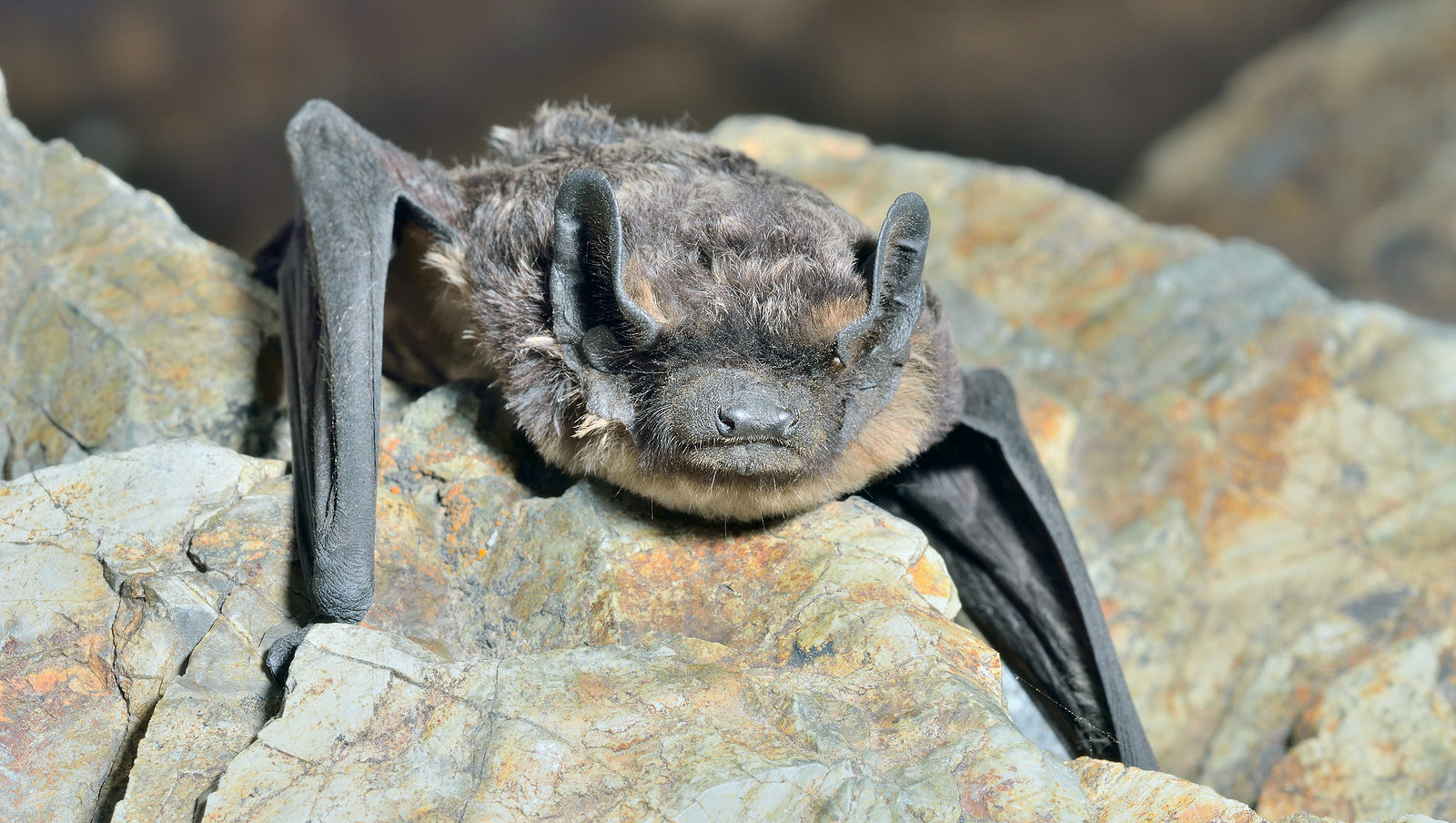
Image 8
- Named for its uniform color, this bat has a wingspan of 11-13 inches
- This bat is colonial, and roosts in caves
- Due to its roosting habits, these bats are found only in the North part of Florida, specifically in the caves in the panhandle. This species is classified as endangered.
Northern Yellow Bat
Image 9
- Fur color ranges from yellow to brown-gray, and has a wingspan of 14-16 inches.
- These bats are solitary, and roost primarily in dead palm fronds (sabal palms) and have been found on occasion in Spanish moss. They are found throughout the state, excluding the Keys.
Seminole Bat

Image 10
- These bats have mahogany colored fur, with some white patches on the shoulders and wrists. They also have a wingspan of 11-13 inches, and are related to the Eastern Red bat.
- These bats are solitary, roosting in pines and Spanish moss. They like to eat moths and other insects. They are found throughout Florida, excluding the keys.
Velvety free-tailed bat
Image 11
- Also known as Pallas’ mastiff bat, these bats range from dark brown to dark gray in coloring. They have a wingspan of 10-11 inches. They eat a variety of flying insects.
- These bats are colonial, and in Florida are typically found roosting in buildings, while in Cuba, they are found to roost in rock crevices, cracks in utility poles, tree hollows, and buildings. These bats are only species found in the Florida keys, and are believed to have arrived in Florida naturally.
Eastern Red bat

Image 12
- Similar in appearance to Seminole bats, these bats range from brick-red to yellowish-red in color. These bats also have a difference in coloring between females and males, with females typically being duller and lighter (this is actually really rare in bat species!). Like Seminole bats, they have white patches on their shoulders and wrists. Their wingspan is 11-13 inches.
- These bats are solitary in nature, roosting in tree foliage and bushes, doing their best impression of a dead leaf. They eat insects, and are found in North and Central Florida. They are not found in South Florida or the Keys.
Hoary Bat
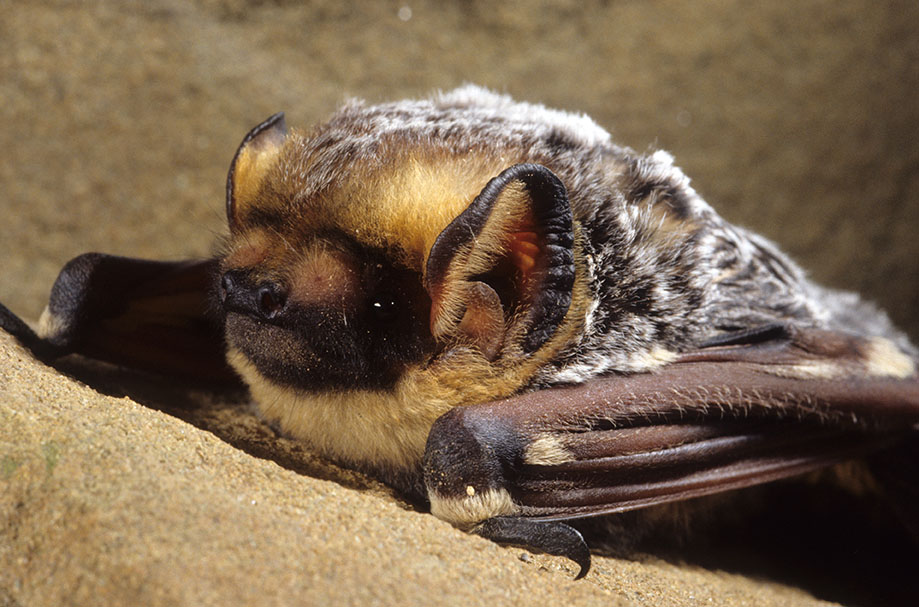
Image 13
- Taking the title of second largest bat in Florida, Hoary bats are a blend of black, brown, yellow, and cream in fur color. They earned their name for their frosted appearance. They also have a wingspan of 13-16 inches.
- These beauties are solitary, roosting primarily in tree foliage and cavities, in Spanish moss, and behind loose bark. Due to their fur colors, Hoary bats are sometimes able to sleep openly on tree trunks, as they are perfectly camouflaged. They are found in North and Central Florida.
Rafinesque’s big eared bat

Image 14
-
-
-
- With a gray-brown coat, these bats earned their name from their large ears. They have a wingspan of 10-12 inches. They are the only Floridian bat species to forage for ground insects (a behavior called gleaning), they also eat moths and other flying insects.
-
-
- These bats are colonial, roosting in small groups in hollows or under the bark of dead trees. They can sometimes be found in caves, or even in abandoned/hardly used buildings. They are found mainly in the Florida panhandle, as well as in other parts of north and central Florida.
Southeastern myotis

Image 15
-
-
- With a wingspan of 9-11 inches, these bats range in color from brown to gray, to even brown-orange. They primarily feed on mosquitoes, as well as other insects.
- These bats are colonial, and are most often found in caves. However, they can also be found in bat houses, hollow trees, bridges, buildings, and culverts. They are found commonly in the Florida panhandle and north Florida. They are found rarely in central Florida, and not found at all in south Florida.
-
Accidental species:
-
-
- https://www.floridabats.org/accidental-species.html
- Click on the link above to learn more about our accidental species.
-
Directions:
Now, continue North on Timucua road, past the pool and Timucua campground until you reach the first intersection. Turn east towards Tequesta. As you turn the corner, there is a culvert on the right side, (south side) of the trail. There you will find Bat House 4. You are approaching it from behind, so you might not see it immediately.
